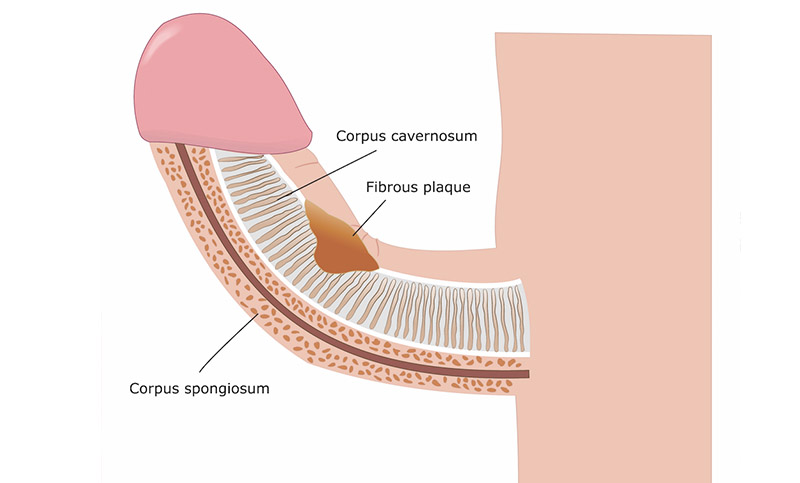Peyronie’s Disease: A Guide to Symptoms, Causes, and Treatment
Peyronie’s Disease: A Guide to Symptoms, Causes, and Treatment

Peyronie’s disease is a buildup of tissue in the penis, causing it to become curved when erect. It can be quite painful. Here’s what you need to know about the condition.
Peyronie’s disease is a condition where scar tissue or fibrous lumps (plaque) build up in the tissue of the penis. This can result in a deformity of the penis when it is erect because the abnormal tissue causes a curvature. This can be quite painful.
It is more common in older men, affecting roughly 3% of men aged 30 to 80. It can be difficult to treat, and the underlying cause often not known.
The Anatomy of the Penis
The penis consists of three main parts. The bottom section contains the urethra. The upper section contains two cylindrical chambers, the corpora cavernosa, which is the penis’ erectile tissue. These are surrounded by a layer of tissue, the tunica albuginea.
Peyronie’s disease is when abnormal tissue forms in the tunica albuginea, usually on the upper side of the penis, but not always. In more serious cases, it can invade the corpora cavernosa too, making erection difficult and painful.

Causes of Peyronie’s Disease
The exact cause of Peyronie’s disease is not fully understood. However, there are some risk factors and suspected causes. These include:
• Acute trauma to the penis that results in the tunica albuginea rupturing.
• Multiple ‘micro-traumas’ over time that cause scar tissue to form in the tunica albuginea.
• Infection of the tissue in the penis.
• A hereditary abnormality in the genes that regulate the growth of collagen in the penis.
• An autoimmune disease where the body’s immune system attacks cells, causing plaque to build up.
Diagnosis and Treatment of Peyronie’s Disease
Diagnosis of Peyronie’s disease will usually entail an examination of the penis and questions about your medical and sexual history. An ultrasound may also be required.
Treatment will depend on the severity of the condition. In some cases, the tissue will go away by itself. There are some medications that can help, such as anti-inflammatory drugs. A collagenase injection into the tissue can help to soften it.
A penile traction device can be used to stretch the penis and reduce the curve. In some cases, surgery may be required. This may involve placing sutures in the penis to straighten it, penile implants, or grafting of the plaque.
If you have any further questions about any urological issues or would like to book an appointment, please don’t hesitate to give us a call.

Understanding Priapism: Causes, Treatments, and How to Protect Your Sexual Health
But why does Priapism occur, how can it be treated, and how do you prevent it from happening to you?…

Do You Have to Pee Often? It Could Be Overactive Bladder (OAB)
An estimated 30 to 40% of individuals will encounter indications of an overactive bladder (OAB) at some stage in their…






